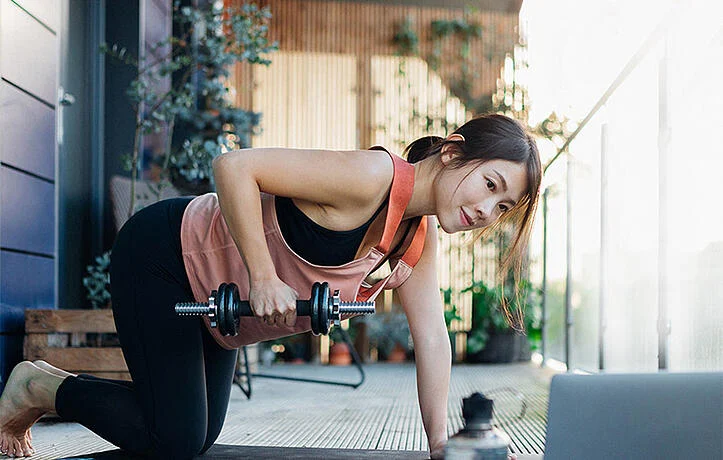By
“My whole schtick when I opened in 2013 was to provide the fitness industry’s first one-on-one personal training that’s done in a group setting,” says Donny Day, NASM-CPT, owner of Peak Zone Fitness in Lake Highlands, Texas.
Pre-pandemic, his workout classes held up to 24 members, with each person receiving individualized medical testing, vitals tracking, motivational coaching, nutrition counselling and workout parameters (such as tempo, weight load and difficulty). Then, on a Monday night, Day caught wind of the governor’s shutdown order.
“I sent out an email right away and said, ‘Don’t worry about it. I’ll have a workout for y’all tomorrow,’” he says. The next morning, Day was live-streaming on Facebook, and he hasn’t stopped innovating ever since. Below, he shares some of the approaches that helped him retain most of his members, add new ones and serve them all in half the time.
Don’t feel the need to go live. Soon after going online, Day switched to prerecorded videos to provide higher quality (and to minimize mistakes). The sessions still have the feeling of a live class because members get to follow along with someone they actually know.
Move onboarding online. New members used to come in for a 2-hour consultation, but now they receive an email questionnaire instead. A trainer’s time is better spent creating and explaining individualized programming than doing paperwork, Day says.
Save time on assessments. Thanks to his video library, Day is able to shut down the club for a week (twice a year) for client assessments without interrupting training. (He used to do assessments year-round.) He has also taught clients how to self-assess on a regular basis by taking photos, doing simple exercise tests or taking measurements.
Offer equipment rentals. During the shutdown, Day sent home dumbbells, medicine balls, mats and more—on a donation-only basis. This helped him retain members, including ones who didn’t use what they borrowed. He is working with a third-party vendor to continue this popular service.
Challenge the status quo. In addition to creating a 56-day COVID-19 fitness challenge for members, Day created a 21-day version for the community. This, too, was customized—according to each person’s fitness level, goals and home equipment. By using existing videos and nutrition materials, Day could keep costs low while attracting new business.
“My plan was to start doing online training in 2 years, but [COVID-19] forced my hand,” he says. “We did lose a ton of revenue, but overall, I feel pretty blessed because now I have the ability to train people all over the world.”
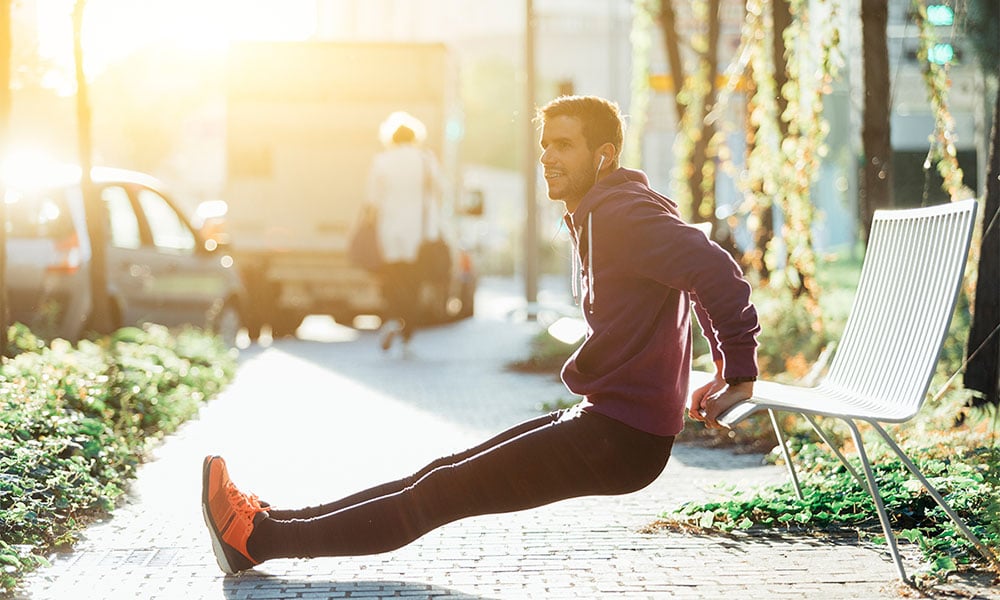
FORM FIX-UP WITH MIKE FANTIGRASSI
3 TIPS TO “TRI” FOR BETTER “ARM BALANCE”
We love watching our biceps flex during a set of curls, but it’s tough to see triceps in action, even with a mirror nearby. As a result, novice exercisers may largely ignore these muscles, even though they make up two-thirds of the upper arm. Giving triceps equal time in the gym can result in a better-balanced physique for clients, whether the goal is toning, strengthening or making serious gains in size. Here, Mike Fantigrassi, NASM-CPT and Master Instructor, shares some ideas for amping up any arm program:
Be flexible with phases. Even if clients are in Phase I: Stabilization for most moves, they may be able to use Phase III: Hypertrophy protocols for their arm work. (A seated biceps curl will deliver more arm benefits than a single-leg standing move.) If appropriate, consider using heavier weights, greater intensity, faster (moderate) tempo, more sets and less rest between sets. You can even introduce drop sets if clients are ready.
If arms are a priority, work them early and often. Tackle them early in a workout session, so clients can really push themselves. You can also program an extra day of arm work: Small muscle groups recover faster than large ones, so you can train arms three times a week, with rest days in between.
Pre-fatigue the muscles. To take a tip from bodybuilders, offer supersets that alternate between an isolation exercise and a compound move. For biceps, this might be biceps curls
then pullups; for triceps it could be triceps pressdowns then neutral-grip chest presses with elbows close to the torso.
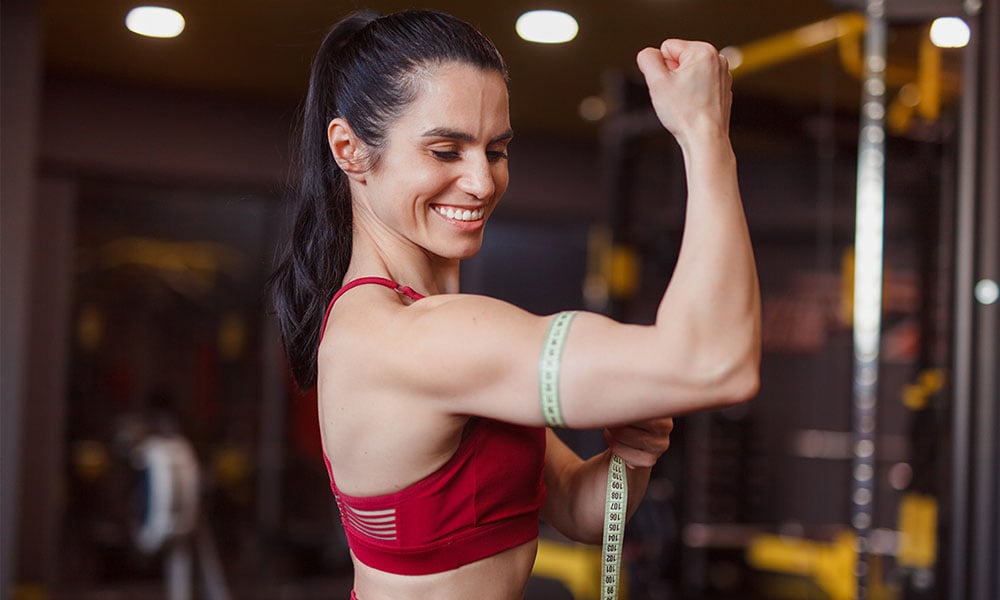
A WORD ABOUT “WINGS”
Many clients ask what they can do about saggy upper arms. The culprit is usually excess skin and too little muscle, says Mike Fantigrassi, NASM-CPT and Master Instructor.
“For example, a female who’s 50 and used to have ‘toned’ arms may have lost muscle mass—which happens every year after age 30—so the skin is looser in that area,” he says. “In that case, doing strength training can help those muscles return to the size they were when the client was in her 20s.” The result? The skin fills out a bit and the arm becomes better defined, all of which gets the client closer to the desired aesthetic.
ASSIGN YARDWORK AS “HOMEWORK”
Plant care burns loads of calories! Here are two comparisons that might surprise you. (Note: Calculations are based on a 5-foot-10-inch, 154-pound man.)

Source: choosemyplate.gov/resources/physical-activity-calories-burn.
SHOULD YOU COORDINATE TRAINING WITH THE MENSTRUAL CYCLE?
For years, researchers have explored how the menstrual cycle affects athletic performance. The consensus? There is none. That may be, in part, because symptoms differ so much from woman to woman. “Just as some women experience horrible cramps and others don’t, some women experience increased fatigue during exercise, while others carry on as usual,” says Maria Luque, PhD, certified personal trainer and a faculty member at Trident University in Cypress, California. “I always ask female clients to use a journal to track their motivation and energy so they can tell if their cycle is impacting their workouts.”
American Fitness asked Luque for a quick primer on what to know—and do—based on that information.
When is performance most likely at its peak?
Though hormone levels fluctuate every day of the month, progesterone and estrogen levels are lowest during the first 14 days of the cycle (the follicular phase), which begins with menses and ends with ovulation. This is generally when a female’s athletic performance is at its peak.
When does performance tend to suffer?
It’s the next 14 days (the luteal phase) that can cause problems. During this time, concentrations of estrogen and progesterone rise. This can lead to irritability, low energy, bloating, sleep difficulties and other “PMS” symptoms. These changes can directly affect workout performance by raising body temperature and making it harder to regulate. Recovery can also be affected, because estrogen inhibits anabolic stimuli (making it harder to build muscle), while progesterone promotes protein catabolism (breakdown).
How might programming change during this phase?
The luteal phase is not the time to program a high-intensity or long-duration workout. It will fail on two fronts: (1) Clients won’t be able to accomplish it, and (2) the emotional distress this causes could be worse than the physical setback itself.
Instead, use this time for mindful, low-intensity mobility and/or balance sessions—and even some rest days. That way, clients will be well-recovered when their energy and motivation return.
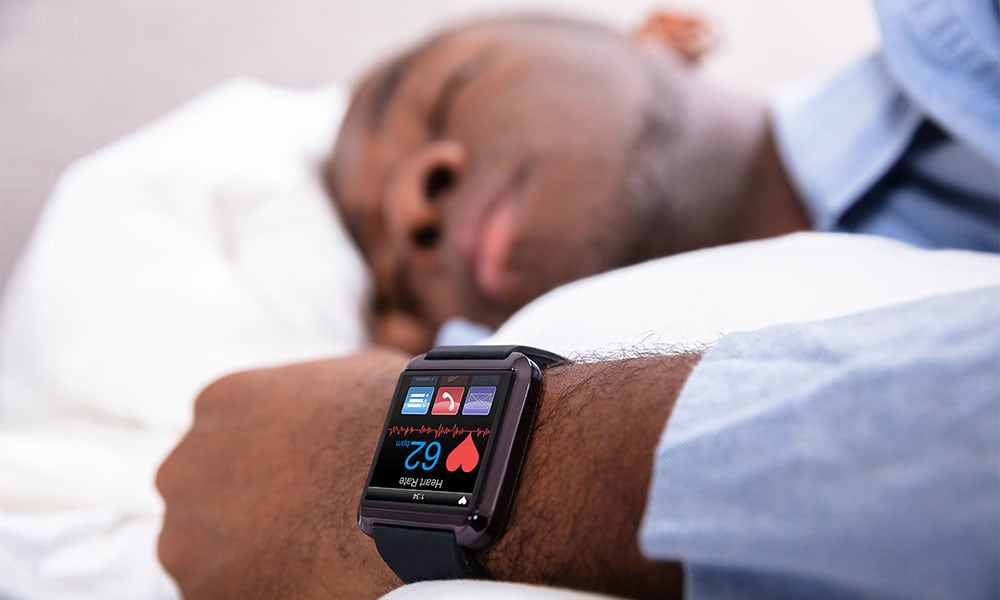
A BEDTIME STORY FOR CLIENTS
Going to bed even 30 minutes later than usual can result in a higher resting heart rate, beginning during sleep and extending into the next day, says a study published in npj Digital Medicine (2020; 3 [29]).
This is bad news: A higher RHR can negatively affect overall cardiovascular health—and the next morning’s workout. (Effects wear off by the following night.) Just another reason to talk to clients about establishing a healthy sleep routine, which they can reset when they change their clocks.
BEAT THE BODY’S “GRAVITOSTAT” WITH A WEIGHTED VEST
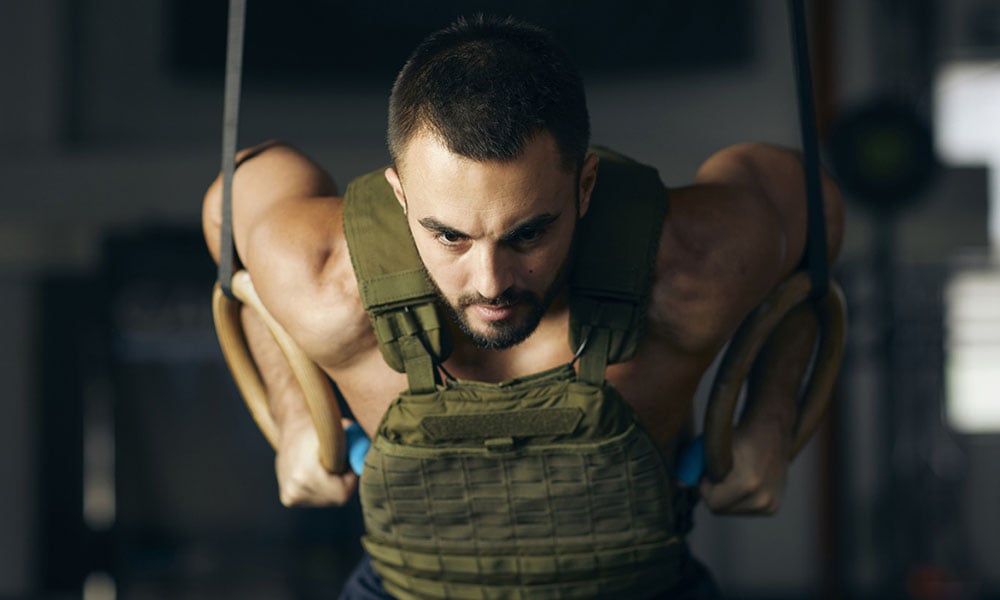
Contrary to previous beliefs, the hormone leptin is not the body’s only regulator of fat mass. In EClinicalMedicine, published by The Lancet, Swedish researchers explained their research on the gravitostat, a “loading dependent homeostatic regulation of body weight and fat mass.”
In short, these scientists believe that an energy balance system in the lower extremities provides feedback to the brain to help regulate body weight. But when we spend a lot of time sitting, it tricks the mechanism into thinking we’re “lighter,” so we are compelled to eat more (2020; 22 [100338]).
The solution in this study was to have 69 people with a BMI of 30–35 wear a weighted vest for 8 hours per day for 3 weeks. Members of the control group wore a vest weighing 1 kilogram (2.2 pounds), while other participants donned a garment weighing 11 kg (24 pounds).
By study’s end, the control group had shed just two-thirds of a pound, while the heavily vested group had lost about 3.5 pounds. Even better: The pounds lost were fat, not muscle. The researchers recommend doing further study, including into whether the fat lost was subcutaneous or the more dangerous visceral kind that gloms onto the internal organs.
USING ACTIVITY TRACKERS TO PREDICT—AND PROMOTE—LONGEVITY
![]()
Using accelerometer data from 548 well-functioning adults ages 65 and older, researchers at Johns Hopkins Bloomberg School of Public Health discovered that participants who engaged in fragmented physical activity (in bouts of less than 5 minutes) were at greater risk for death from all causes than were those whose activity typically lasted 5 minutes or more (JAMA Network Open, 2019; 2 [10], e1912352).
Researchers hope this information may inspire physicians to monitor patients’ activity with wearables, particularly as they reach ages where adults tend to become more sedentary.
“A doctor seeing a patient transitioning into a more fragmented activity pattern and a more sedentary state might initiate a prescription for a tailored physical activity regimen,’” says lead study author Amal Wanigatunga, PhD. “I think that type of clinical application, where we aim to wield exercise formally as medicine, is where the study of activity fragmentation can take us.”
COVID-19 RECOVERY: CONSIDERATIONS FOR ELITE ATHLETES
Early this year, Michael Scott Emery, MD, FACC, and colleagues sought to tackle one of the many mysteries of COVID-19: When is it safe for recovered patients to return to exercise?
In their expert analysis, published in The American Journal of Cardiology, these researchers noted that intense or vigorous exercise is not recommended during active infection because of the risk of myocarditis (inflammation of the heart muscle). This condition can cause heart dysfunction, irregular heartbeat and even death (see “Exercise and Athletics in the COVID-19 Pandemic Era,” acc.org).
Recreational exercisers who are cleared by their healthcare team can begin building up to their usual program 2 weeks after a positive test result, if they’ve been asymptomatic, or 2 weeks after symptom resolution in other cases. Elite or competitive athletes need to be a bit more cautious, though. They may require additional tests, such as an ECG and an MRI, before resuming their usual routines.
Trainers should work closely with a client’s healthcare team to determine the safe upper limit of exercise and identify other concerns before creating and progressing a program. A review of Chapter 16 in the NASM Essentials of Personal Fitness Training (6th ed., 2016) may be helpful to trainers who do not typically work with populations with compromised health.
HOW TO MAKE MONEY TRAINING CLIENTS ONLINE: A MULTIMEDIA MINI COURSE
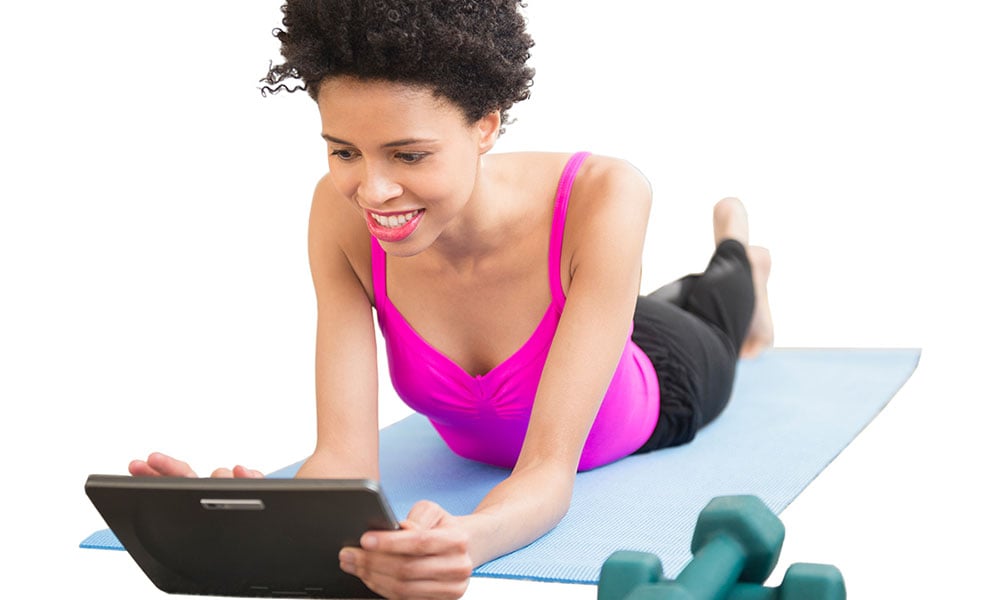
A survey of 1,000 fitness club users, conducted in April by Harrison Co. (an investment bank), produced an interesting statistic: 40% of respondents had exercised at home for the first time ever because of COVID-19 restrictions.
Those who wind up preferring a home-based workout will have a particular need for guidance to ensure that safety, form, assessments, progress and adaptations are still part of the plan. To make sure our certified personal trainers are ready to serve these homebodies effectively, NASM created a new virtual coaching specialization course.

